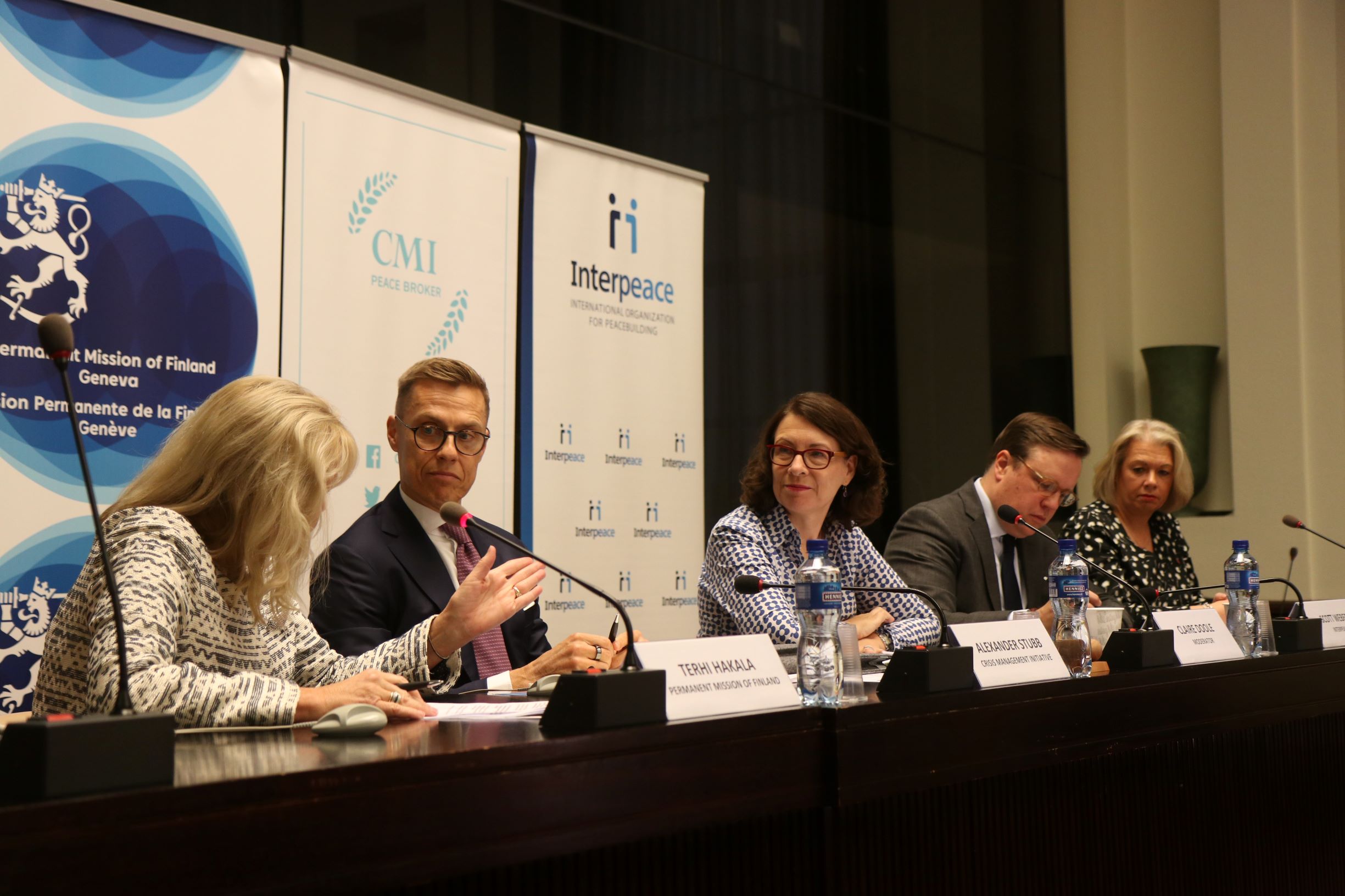Can technology improve the quality of peace?
Technology has transformed the world but the basics of peacemaking remain unchanged. Building peace is – and always has been – about building trust. However, the landscape of peacemaking in the digital era differs dramatically from the past. Technology provides effective tools for action, for better or worse.

These themes were explored at Geneva Peace Week by a panel co-organised by CMI, Interpeace and the Finnish Permanent Mission to Geneva. Our Chair of the Board Alexander Stubb, the President of Interpeace Scott Weber, and the Vice-President Global Strategic Relations Charlotte Kirby from Salesforce engaged one another in a lively discussion. The panel was moderated by the former BBC reporter and radio broadcaster Claire Doole, with Ambassador Terhi Hakala providing the opening remarks.
There are five essential elements to peace and peacemaking, explained Alexander Stubb: trust, inclusion, communication, capacities, and solutions. Trust is the way of and to peace. Guaranteeing inclusion and communication throughout the peace process opens it up to the wider society, thus making the peace more sustainable. The success of a peace process also relies on the conflict parties’ and stakeholders’ capacities to engage in the process fruitfully and carry out its results. Solutions, on the other hand, stem from analysis and the knowledge of experts and local actors.
“Peacebuilding shouldn’t be its own field. It’s about doing everything else right”, Scott Weber pointed out. In a broad sense, technology stands to benefit peace building by improving different aspects of society, services and administration. On a very practical level, solutions such as biometric voter registration may build up democracy and increase trust in elections.
In a narrower sense, technology could give a direct boost to peacemaking and conflict prevention. Although it might not seem too hard a task to think of ways in which tech could be used to enhance the core elements of peacemaking, there is a lack of practitioner-driven applications. Peacetech is still very much in its infancy. Right now, high expectations are placed on using big data for effective conflict analysis. Other solutions, like web-based tools, could be used to involve society more extensively.

From left to right: Terhi Hakala, Alexander Stubb, Claire Doole, Scott Weber, and Charlotte Kirby.
Although the benefits of technological progress are undeniable, there are less promising aspects to it. In the wrong hands, new applications can fuel even harsher oppression and suffering. Cyberattacks could endanger a fragile peace process or change conflict dynamics altogether – readily available and distantly operated drones even more so. As the cost of war fighting goes down, so does the incentive to restrain from it.
After the Arab Spring of 2011 excitement over the positive impact of social media was widespread. “Instead of digital democracies we have seen the rise of digital dictatorships”, said Alexander Stubb.
Making sure peacemaking stays on a par with the challenges of the day means that its practitioners must update their methods constantly. As the core of peace building is fundamentally the same, improving existing work with new tools is at the heart of peacetech. “Process first, tools second”, as Scott Weber put it. “The tool needs to enhance the process of building trust.”
In contrast to naive optimism and downbeat pessimism, a fuller understanding of the societal impacts of technology has now emerged. Future peace processes depend on this understanding.
“Technology is a method to simplify a task,” summed up Charlotte Kirby. “It is only as good as the person using it.”
It’s now time to put the peace to tech.
Text and photos Olli Puumalainen/CMI